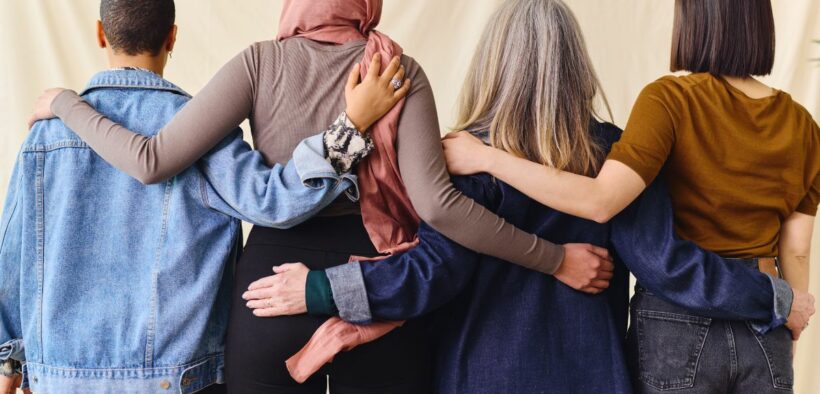Close to 7 in 10 women in Australia do not feel represented on International Women’s Day, More Voices, More Representation campaign launches to drive change.
A recent nationwide survey reveals women, trans or gender-diverse and non-binary people do not feel represented at International Women’s Day (IWD) events, panels or in the media.
Half of the respondents indicated having at least two intersecting identities and being from racialised, minoritised or marginalised communities such as First Nations, refugees, people with a disability, women of colour, culturally and linguistically diverse (CALD), and LGBTQIA+, amongst others.
The More Voices, More Representation campaign is the result of a coalition of 25 Australian advocates and organisations joining forces to help create an International Women’s Day that has greater intersectional representation to ensure all women are recognised, celebrated and represented on that day and beyond and that more intersectional voices are given access to platforms this IWD.
“Representation on stage matters because impact does not end on stage – it’s where it begins. That’s why event organisers must ensure an intersectional lens when searching and booking speakers,” said Cathy Ngo, Keynoteworthy Founder.
The campaign launches with a survey of 419 women, trans or gender diverse women and non-binary people, with 4.8% identifying as Aboriginal or Torres Strait Islander bringing to light the shortcomings of how IWD is approached and celebrated in Australia and how the month-long celebrations across the country are not reflective of Australia’s diverse population of women.
Related: Women of Colour Australia in partnership with Women’s Business launch first Executive Leadership Program
According to the 2021 Census, Australia is becoming increasingly diverse with 3 in 10 Australians (27.6 %) born overseas and the number of people who speak a language other than English at home has increased by nearly 800,000, rising to over 5.5 million people. Women from CALD backgrounds make up a significant proportion of the Australian population.
The three largest groups of respondents to the More Voices, More Representation survey identified as women of colour (54%), CALD women (52%) and immigrant women (42%), and the majority did not feel that IWD has been representing them in the past. 83% of women of colour, 79% of CALD women and 75% of immigrant women reported that they have felt excluded from IWD celebrations in Australia.
The top reasons being that the women speaking at previous IWD events appeared to be from economically privileged backgrounds, had more opportunities and access to networks and that they did not look or sound like them.
“Whilst these statistics are not at all surprising, they are still depressing to hear. We all need to do better. My invitation to our allies this IWD and beyond is to show up and stand up for First Nations Women and Women of Colour,” said Brenda Gaddi, Women of Colour Australia Founder and Managing Director.
“If you are invited to an event and it is not diverse and inclusive, bring it up to the organisers, question them about it, give up your speaking spot for a First Nations woman or a Woman of Colour, or just say no.”
When asked how Australia can make IWD more inclusive and representative of all women in Australia in 2023 and beyond, 31% of respondents said there need to be more women with lived experience to shed light on the issues that women face, especially women with intersectional identities. 20% suggested that IWD events need to empower participation on panels and at events by paying Indigenous, Black, Women of Colour and non-binary folk for their labour, time and expertise.
Larissa Minniecon, a Kabi Kabi, Gureng Gureng, Ambryn and Torres Strait Islander woman part of the We Are the Mainstream Collective emphasised that First Nations women are the most traumatised and unrecognised race and gender, in the world.
“We, the First Nations women have survived alongside the fringes of this nation for over 200 years, we have sacrificed our lives, our bodies, and our voices, for our passionate plea for land rights within this country, now called Australia.”
“Through a First Nations woman, our 60,000 years bloodline will never be broken, our bodies are an act of resistance to colonisation, and our very existence is a threat to the Australian identity.”
Mylan Vu, Managing Director and Founder of Vu Consulting highlighted that there is no “silver bullet solution”, but through a collaborative effort to increase the number of diverse speakers at events and on panels and in terms increase the number of intersectional voices featured in the media around IWD 2023.
“The survey results indicate the need for Australia to shift the conversations around, and representation of, women with intersecting identities at IWD events. Unless Australia celebrates IWD with an intersectional approach which is representative of its population, IWD will remain a day mostly for white, straight and able-bodied women.”
“Being an ally is about using your power and privilege to call out inequities and inequalities,” said Gaddi.
Related: International Women’s Day shines light on female veteran suicide
Menchie Khairuddin is a writer Deputy Content Manager at Akolade and content producer for Third Sector News. She is passionate about social affairs specifically in mixed, multicultural heritage and not-for-profit organisations.


































































































































































